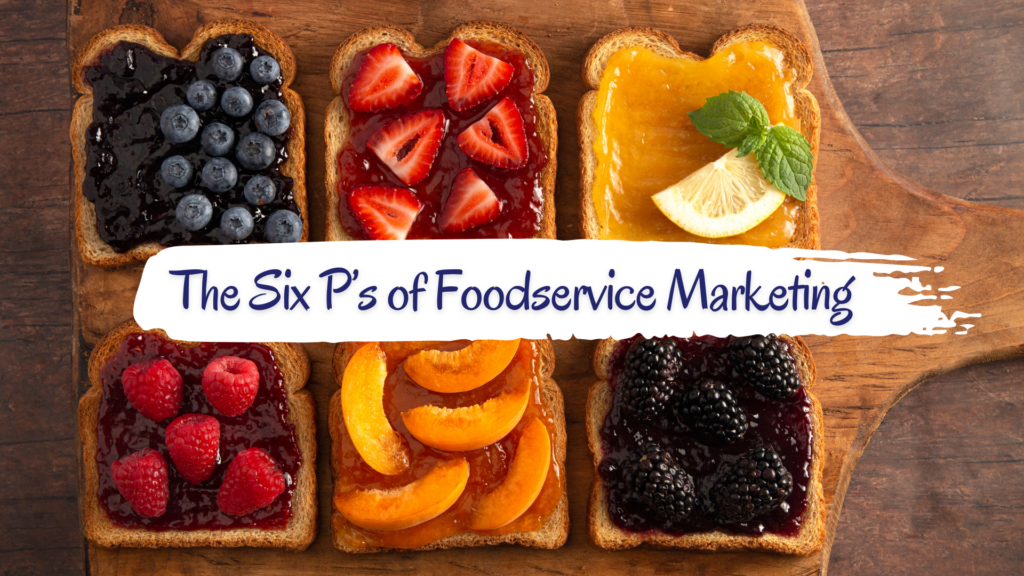
Whether you’re a food & beverage manufacturer, distributor, or part of the restaurant tech world, your business’ success depends on connecting with your customers. That’s where the 6 P’s of foodservice marketing comes in.
The marketing mix in food service market includes the right product, price, promotion, place, people, and presentation. It also includes elements such as customer service, convenience, and branding.
In this guide, we’ll break down these 6 P’s of marketing and show you how to spice up your foodservice marketing plan with Brizo, a market intelligence platform.
The 6 P’s of marketing in foodservice industry are product, price, place, promotion, people, and presentation. Find out how these elements can drastically improve your business and relationships.
For businesses like yours, the product extends beyond what ends up on a diner’s plate. It’s about the ingredients, equipment, or technology that restaurants rely on. For instance, a food & beverage manufacturer might focus on organic ingredients to meet the growing demand for healthy eating. Companies are also focused on sustainability and reducing their environmental footprint. For example, they may invest in renewable energy sources and reduce their waste output. Additionally, many manufacturers are creating biodegradable packaging and using sustainable materials in their production processes.
A restaurant tech company could develop an innovative POS system that streamlines operations. Understanding and addressing the specific needs of restaurants can position your product as an indispensable part of their success.
Pricing in the food service industry is about creating value propositions that resonate with business clients. It’s not just the cost but the value your product or service adds. B2B clients are looking for solutions that will help them save time and money, so it is important to offer products and services that have features that meet their needs. Furthermore, B2B clients are often willing to pay a premium for products and services that offer a high return on investment.
For a food distributor, this might mean offering volume discounts or flexible payment terms that support a restaurant’s cash flow. For restaurant tech, it could involve tiered pricing based on usage or features, ensuring solutions are accessible for smaller establishments and scalable for larger ones.
In your sector, ‘Place’ takes on a complex meaning. It’s about efficient distribution networks, timely deliveries, and strategic warehouse locations. It’s also about your digital presence – a user-friendly website or a B2B e-commerce platform can make it easier for your clients to place orders, track shipments, and manage their inventory. Ensuring your products are where they need to be when they need to be there is crucial.
Your digital presence is super important because it allows people to find and purchase your products quickly and easily. It also makes it easier for your potential customers to track orders and manage inventory. Additionally, having an efficient distribution network and timely deliveries ensures that your food products are always available and can reach your loyal customers when they need them.
Promotion in your field goes beyond traditional advertising; it’s about building long-term relationships. Trade shows, food industry meet-ups, and professional associations play a significant role. Online, it could be content marketing that educates your clients about target market trends or best practices. For instance, a food distributor might use email marketing to share insights about seasonal availability or recipes that highlight their products. Social media can also be used to build brand awareness by engaging with customers and creating conversations. Additionally, referral programs can be a great way to build relationships with customers and generate leads.
In B2B, ‘People’ is about the relationships you build. Your sales team, customer service representatives, and even your delivery personnel are ambassadors of your brand. Training them to understand the unique challenges and needs of the foodservice industry can make a significant difference. For instance, a restaurant supply chain’s account manager who can offer personalized recommendations based on a restaurant’s cuisine and customer demographics can become an invaluable resource.
Presentation for B2B companies is about professionalism and reliability. It’s reflected in the quality of your products, the user experience of your website, and even the design of your invoices. Everything should communicate that you are a credible and trustworthy partner. For a food & beverage manufacturer, this might mean clear labeling and consistent quality. For a restaurant tech company, it could be about a user interface that’s intuitive and a customer support experience that’s responsive and helpful.
By including these 6 P’s in your marketing strategy, you can strengthen your position in the foodservice market, build lasting relationships, and drive your business toward sustained growth and success.
Try Brizo, a market intelligence tool, to improve prospecting, market more precisely, expand operations, or enrich your data
Here’s how Brizo FoodMetrics can help:
Brizo FoodMetrics uses its comprehensive restaurant database to track industry trends and make data-driven decisions.
Want to transform your foodservice marketing plan? Schedule a FREE trial now.